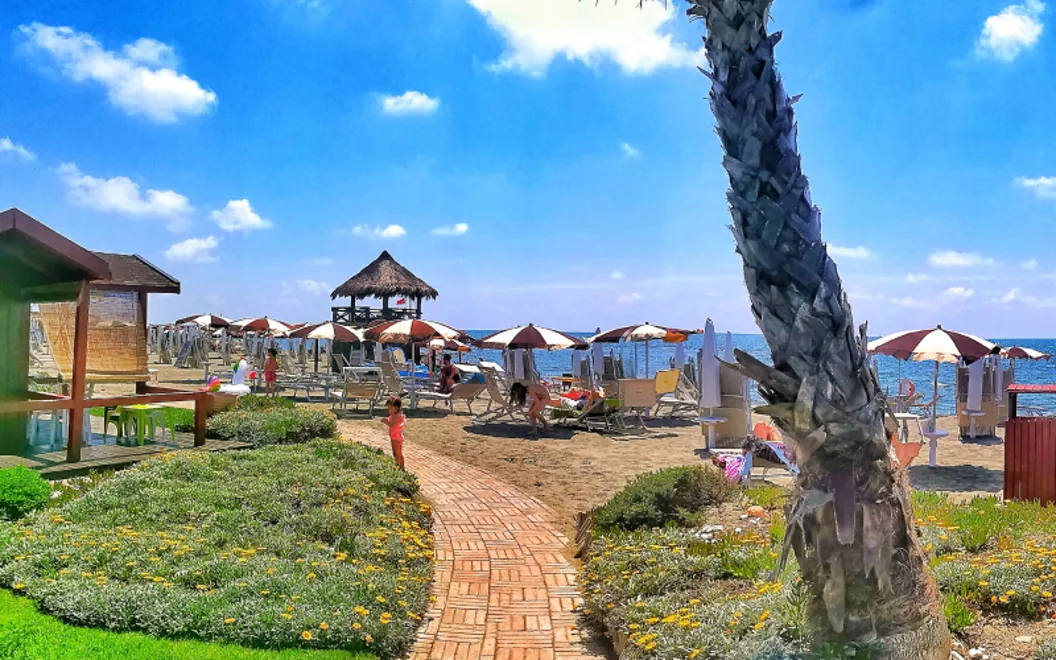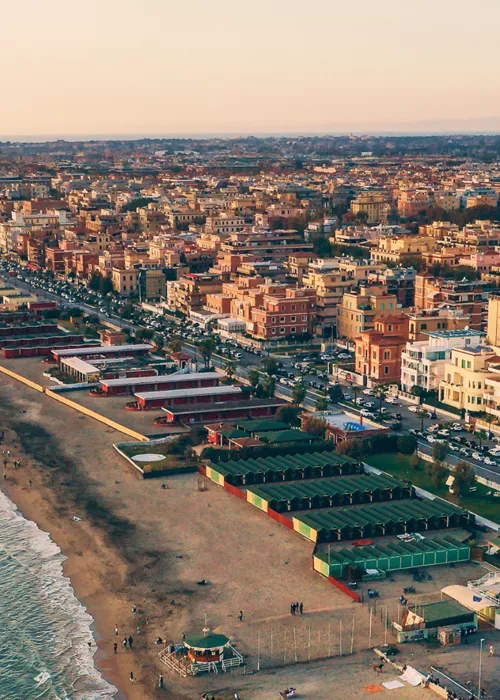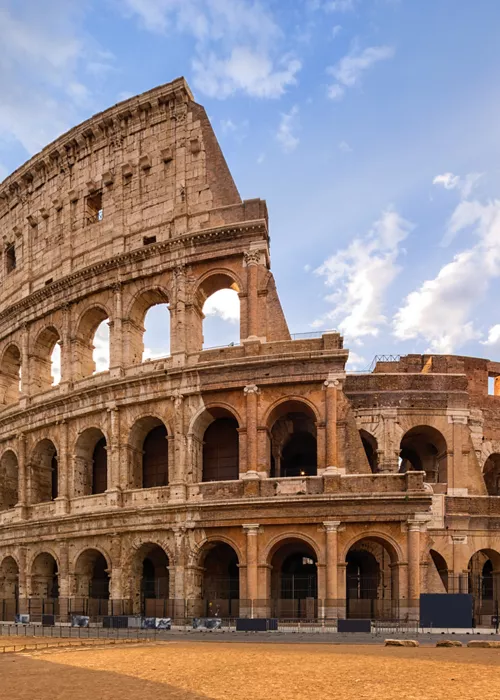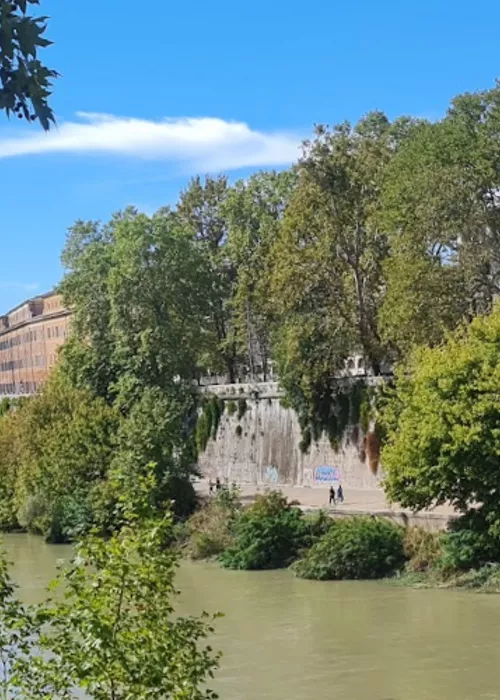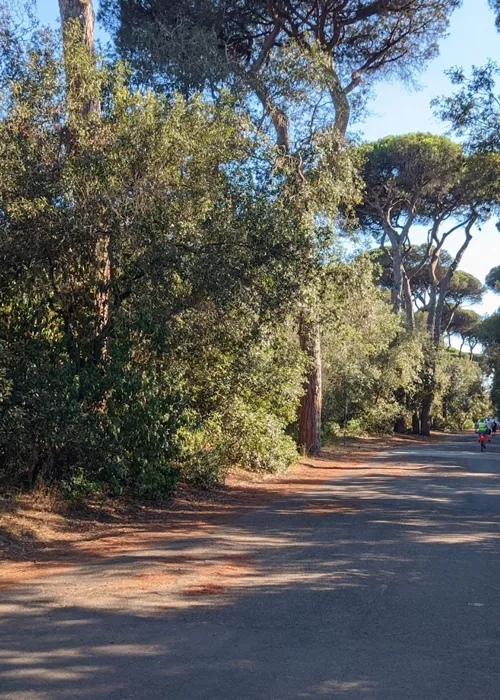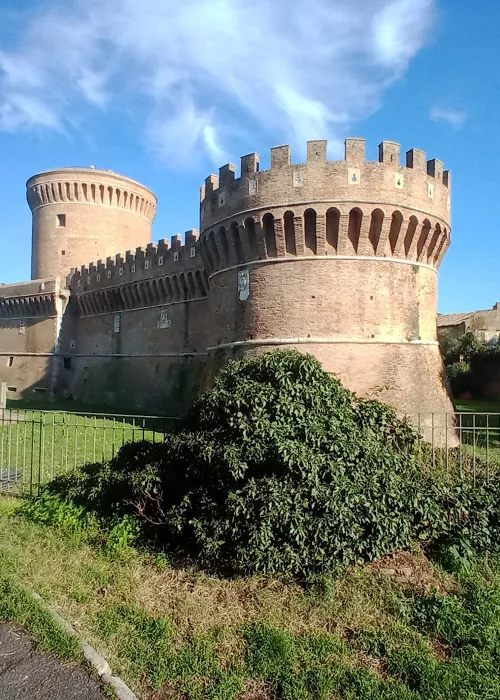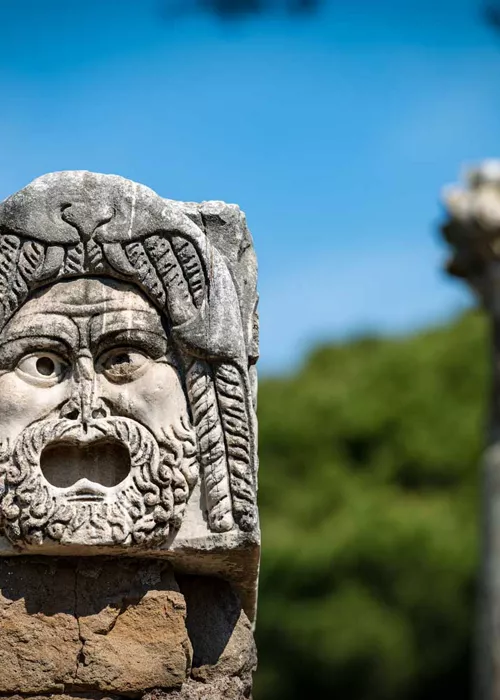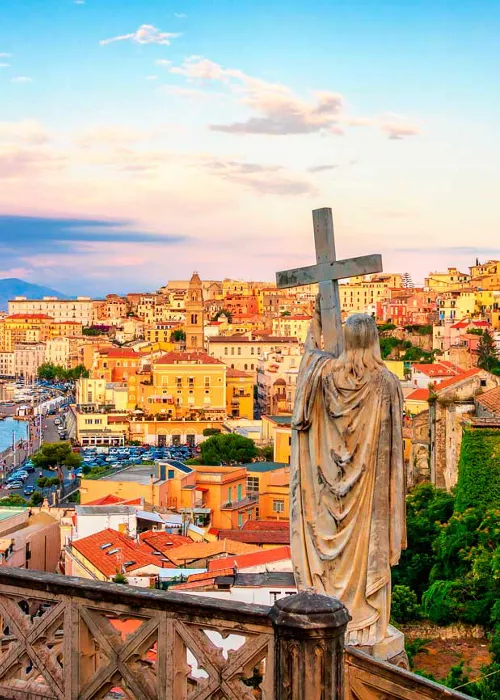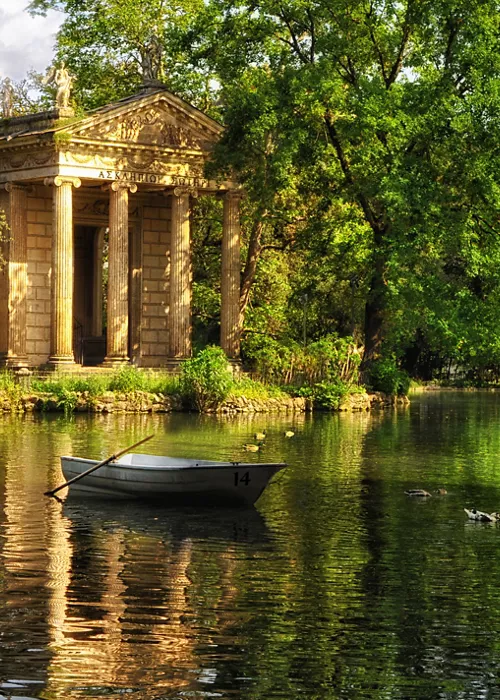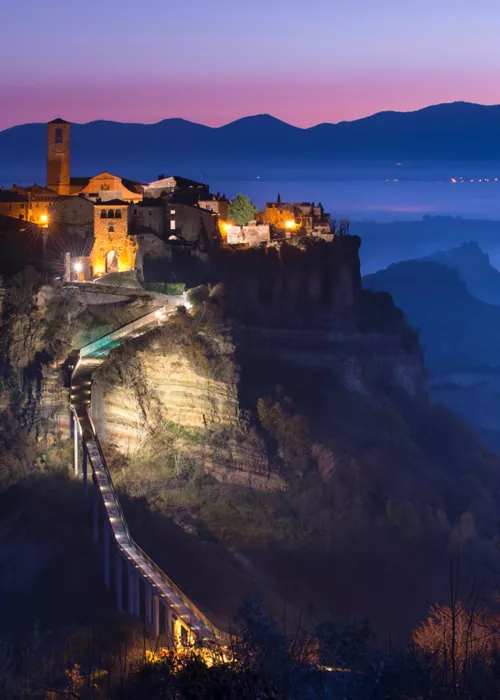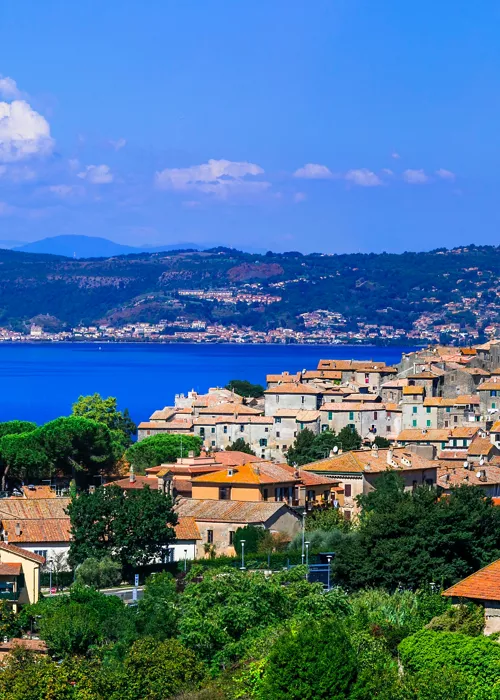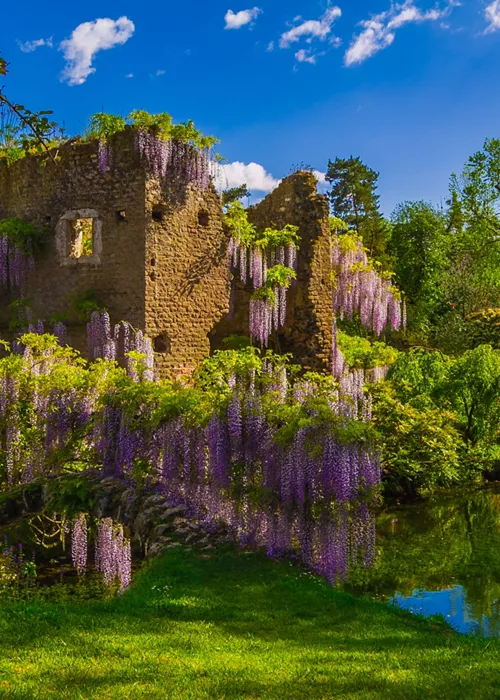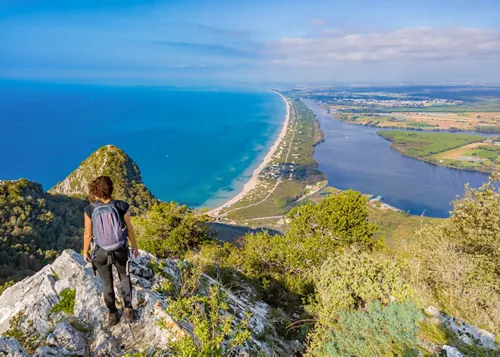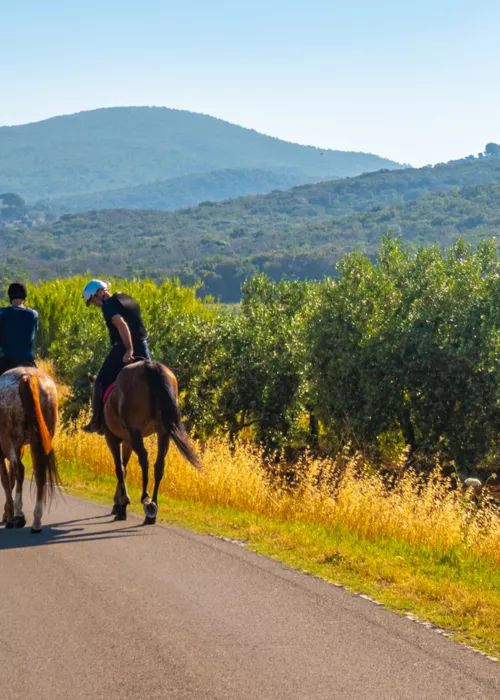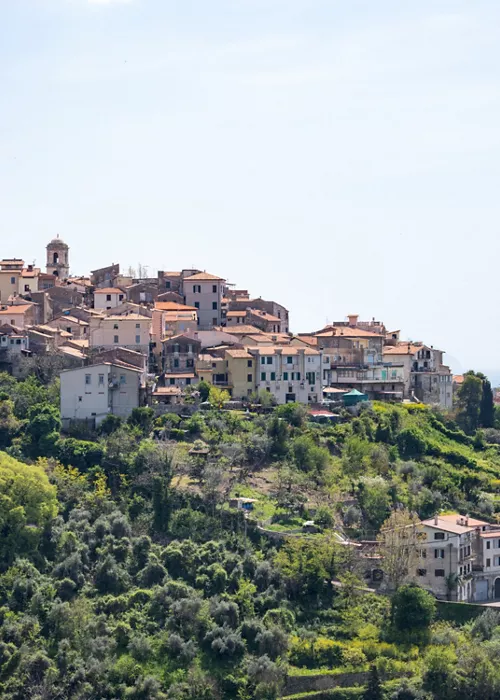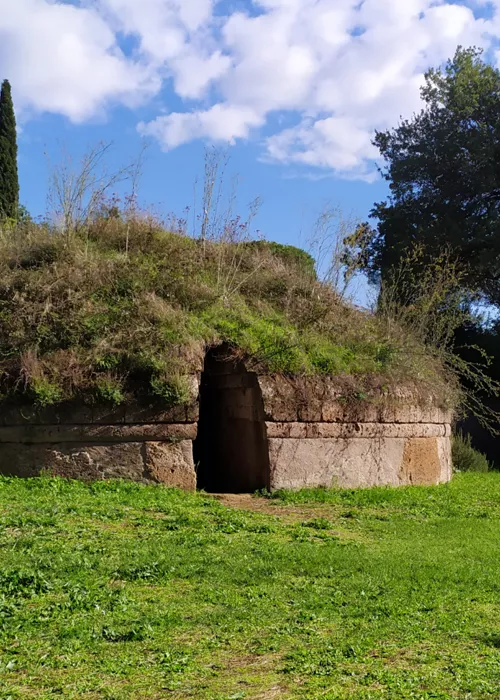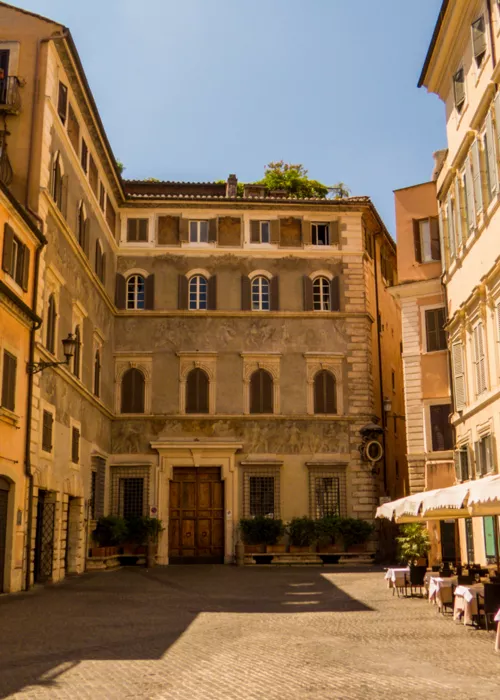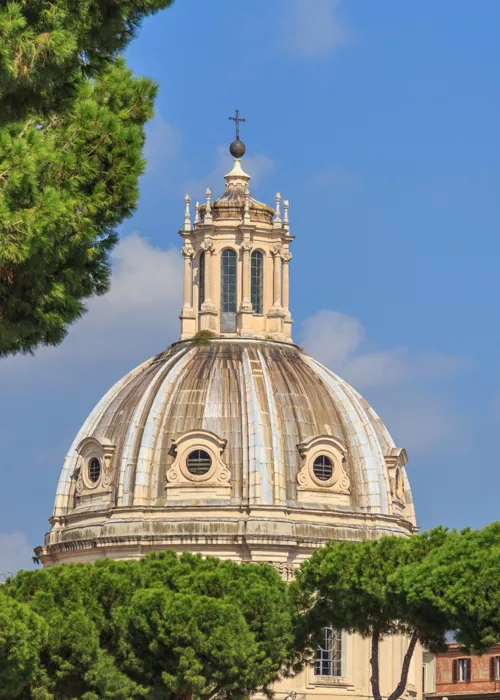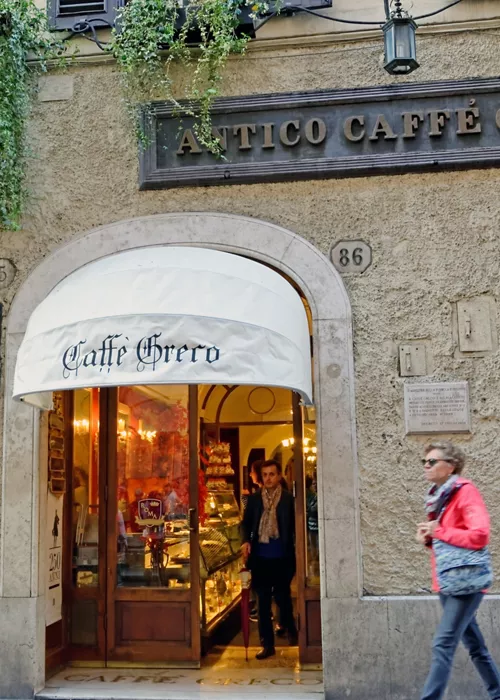Ostia: discovering the sea of Rome
4 minutes
It is the favourite seaside resort of the Romans, thanks to its strategic proximity to the capital: indeed, only 32 kilometres between the centre of Rome from Ostia.
And to the traffic on Via Ostiense, when the warm weather arrives, many prefer to take the train. Locals call it theFreccia del Mare, and from Porta San Paolo/Piramide it reaches the coast in an hour.
The Kursaal trampoline, a real attraction

If your destination is the beach, the right stop is Lido di Ostia Centro.
It is best to arrive early in the morning, to conquer your favourite spot on the beach, perhaps not far from the historic Kursaal, one of the oldest clubs on the Latium coast.
Opened on 15 June 1950, designed by architect and town planner Attilio Lapadula and later extended by engineer Pierluigi Nervi, it is still one of Ostia's most photographed attractions.
Contributing to all this photogenicity was Italian auteur cinema. The pool, with its scenic diving board, was in fact chosen as the set for many films shot in the 1950s and 1960s , such as “I Vitelloni” “Belle, ma povere”.
After a period of decline, the club has now been relaunched under the name Kursaal Village.
A variety of activities are possible here, from beach volleyball to kite surfing. The Olympic pool remains the number one attraction. Access is chargeable and can also be purchased online.
A walk in the Borghetto dei Pescatori

Just under two kilometres from the Kursaal, there is romantic Borghetto dei Pescatori, a small hamlet with just a few houses, in Ostia Levante.
A pedestrian island, it allows one to stroll in serenity and appreciate the beauty of the place, but also to enjoy a good fish dish in some historic premises.
Every year in summer, Borghetto hosts the Tellina Festival.
The history of Ostia Nuova
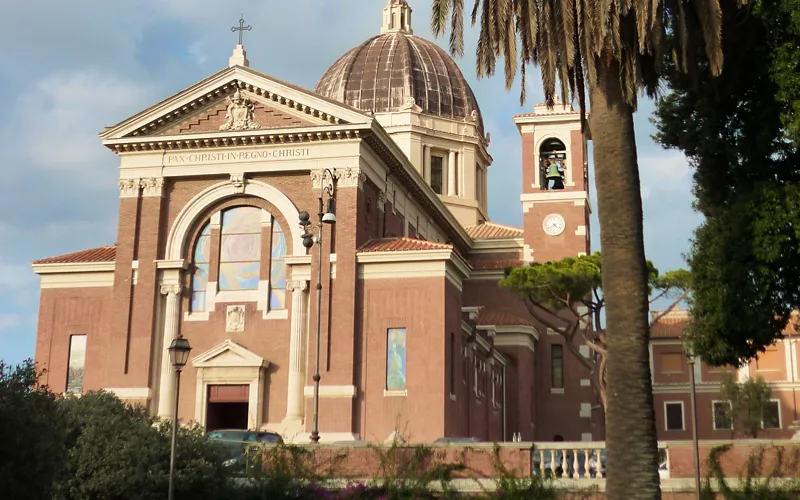
Ostia, however, is more than just beaches.
Founded at the beginning of the 20th century as Ostia Nuova, it has developed steadily over the years to become a sort of neighbourhood of Rome, so much so that today it is to all intents and purposes a suburb of the capital.
Strolling through the streets of the old town centre, one comes across Art Nouveau palazzine and villas, while Via della Marina is characterised by popular buildings. Also very special is the Parrot Palaceso called because of its bright colour. Overlooking Piazza Anco Marzio, it was designed in 1929 and was inspired by the tenements of socialist Vienna.
To the 1920s also date bac the Governor's Palace and the so-called Colony built between 1916 and 1920 and intended as a hospital for the heliotherapeutic treatment of children suffering from tuberculosis. The modern architecture of this period is also visible in public works, such as the of the Futurist-inspired Post Office, but also in the Santa Maria Regina Pacis Church built between 1919 and 1928 in neo-Renaissance and neo-Baroque style.
Discovering the marina and local wildlife

Since 2001, Ostia has also had a marina capable of accommodating 833 boats up to 60 metres. In the area, the Ostia Mediterranean Habitat Centre, a true paradise for birdwatchers, is not to be missed. More than 200 bird species have been recorded, including the red heron, which has the most important colony in Lazio.
The park stands where there used to be a dump, known because it was the scene of Pier Paolo Pasolini's death. In his memory, a Literary Park was erected, maintained by volunteers from Lipu, the League for the Protection of Birds. Access is free, from 9 am to sunset, while reservations are required to visit the Mediterranean Habitat Centre. A tip? Go early in the morning: it will be easier to spot birds.
Pineta di Castel Fusano, the green heart of Ostia
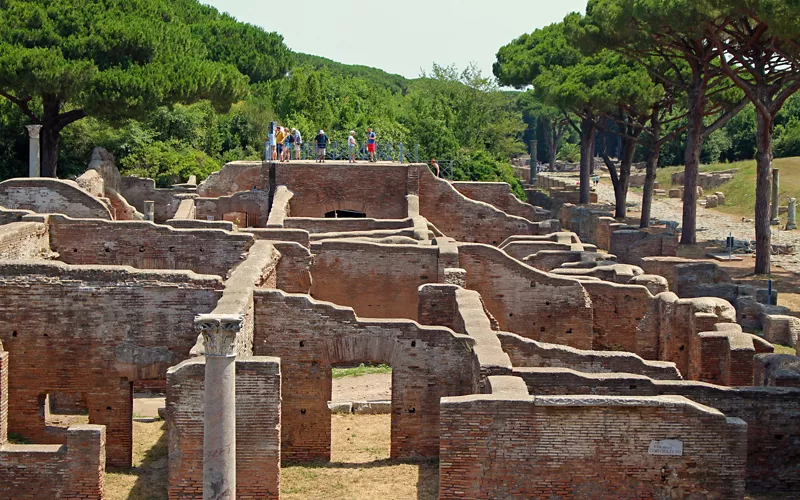
The surprises in Ostia are not over.
Five kilometres from the mouth of the Tiber River lies the Castel Fusano Pinewood Urban Park, a protected area of 916 hectares. Archaeology enthusiasts will be able to admire what remains of a Roman villaAccording to some scholars, it would have belonged to Pliny the Younger, while for others it would have belonged to Hortensius, an orator and opponent of Cicero.
The journey through history continues among the archaeological excavations in Ostia, not far from the Lido. They can be reached by car or by train, getting off at Ostia Antica. Strolling in Ostia Antica Archaeological Park among the domus, the forum, the temple, the basilica and the theatre, is a great emotion, a real journey through time. Here are also the remains of the oldest synagogue in the western world: it dates back to the 1st century BC and was unearthed in 1961.
The Castle of Julius II, from papal fortress to prison
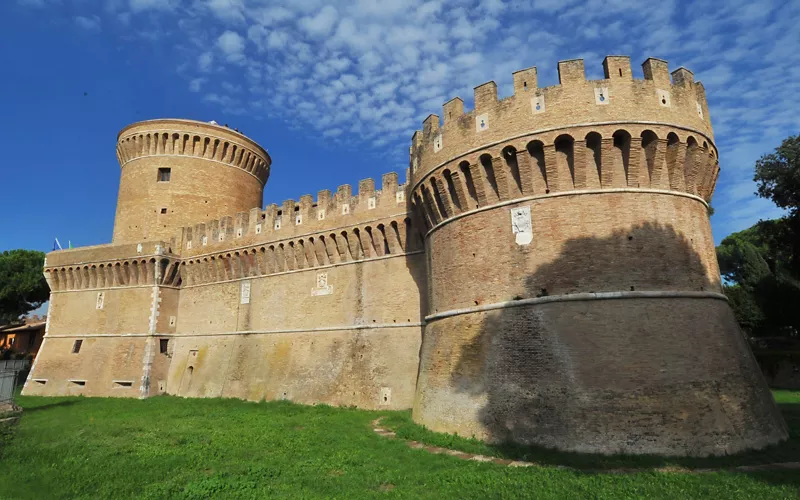
At the entrance of the excavations, the Castle of Julius II, a fortress built between 1483 and 1486 and used as the seat of the papal customs house, which was responsible for collecting taxes on goods arriving in Rome by sea, is very interesting.
After the flooding of the Tiber in 1557, the fortress was abandoned, and in the 19th century it was used as a prison for those sentenced to forced labour. Since 2021, the Castle has been open to visitors on Saturdays and Sundays, a must for history lovers. Ostia is indeed full of secrets to discover. Whether it is for a day out or a longer holiday, it is worth putting it on your list of places to visit.

